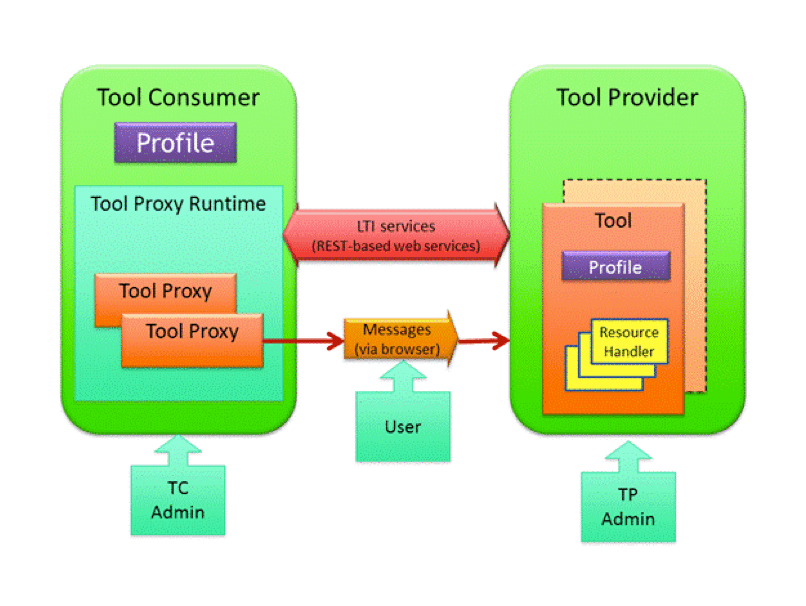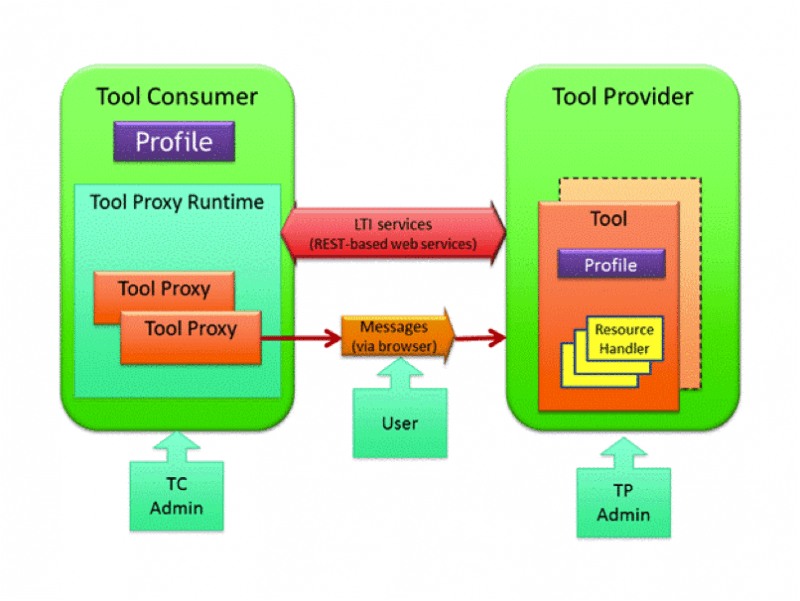The Learning Tool Interoperability
If you work in the EdTech space, you’ve mostly likely heard of LTI (Learning Tool Interoperability). LTI is an open standard created by IMS Global Learning Consortium and is increasingly important due to eLearning’s swift advancement in the last two years.
It is nearly impossible for a single vendor to provide all of the tools that schools and organizations need. However, the ability to integrate multiple tools from different vendors will become essential for learning systems.
5 Tips To Leverage Learning Tool Interoperability
So what does this mean for eLearning developers? If you are building an application in education, you should already be considering LTI support. Whether you are building LMS or an educational game, your application’s ability to support LTI has a direct impact on acquiring adoption for your application.
The following points are helpful to keep in mind as you begin leveraging LTI.
Picture from IMS Global Learning Consortium, Inc.
1. Tool Consumer vs Tool Provider
Tool Consumer is usually an application that authenticates the end users and provides the users access to multiple contents and applications. A common Tool Consumer would be LMS.
Tool Providers are education applications; they can be quizzes, animation, or even games. Tool Providers implement the LTI standard to allow Tool Consumer to connect to it.
2. Connections
In most cases, Tool Consumers and Tool Providers are both web applications. They communicate with each other by making a connection using the LTI standards. In essence, connections are HTTP requests and responses. Data is exchanged in common web format like JSON-LD.
3. What is the difference between LTI and SCORM?
While both LTI and SCORM (Shareable Content Object Reference Model) were intended for users to deploy diverse applications across LMS, there are also two unique differences:
- SCORM requires you put the entire app inside a downloadable package (e.g. a zipped folder). This package has to follow a standard to organize the content inside that package.
- On the other hand, LTI Apps do not need to be downloadable because your web application can run on your website normally, similar to Facebook apps. The only difference is that your app must support the LTI protocol so other web app like LMS can connect to it.
4. What are some tips for implementing LTI?
- Follow the standard; be aware there are multiple versions of the LTI standard.
- Consider how your application will look and function when behind “embedded” in a Tool Consumer like LMS
- Test it! This may sound obvious, but make sure you build a Tool Provider by testing it with multiple LMSes. If you are building a Tool Consumer, try to test it with as many Tool Providers as you can.
While it is important to implement the functionality of the application when building an education application, it is also important to consider how your application will be integrated with other applications and systems. If you intend to build your application to be used directly by teachers and students, integration with other tools will likely be needed sooner than you think.











